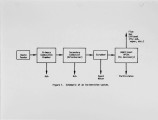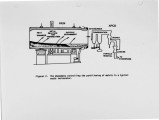| Title |
An Analysis of Metal Partitioning in a Hazardous Waste Incineration System |
| Creator |
Lee, C. C. Ph.D. |
| Publisher |
University of Utah |
| Date |
1987 |
| Spatial Coverage |
presented at Palm Springs, California |
| Abstract |
The 1984 Amendments to the Solid Waste Act require that the wastes listed under the Resource Conservation and Recovery Act (RCRA) be analyzed to assess the feasibility of further banning from land disposal. Incineration of hazardous wastes, municipal wastes and industrial sludges produces some extent of trace metals. This paper provides a preliminary model concept for analyzing metal partitioning during incineration. The paper concludes that a model for predicting metal partitioning phenomenon is feasible and will reduce costs in conducting metal emission testing in the field. |
| Type |
Text |
| Format |
application/pdf |
| Language |
eng |
| Rights |
This material may be protected by copyright. Permission required for use in any form. For further information please contact the American Flame Research Committee. |
| Conversion Specifications |
Original scanned with Canon EOS-1Ds Mark II, 16.7 megapixel digital camera and saved as 400 ppi uncompressed TIFF, 16 bit depth. |
| Scanning Technician |
Cliodhna Davis |
| ARK |
ark:/87278/s6js9szw |
| Setname |
uu_afrc |
| ID |
4000 |
| Reference URL |
https://collections.lib.utah.edu/ark:/87278/s6js9szw |





















